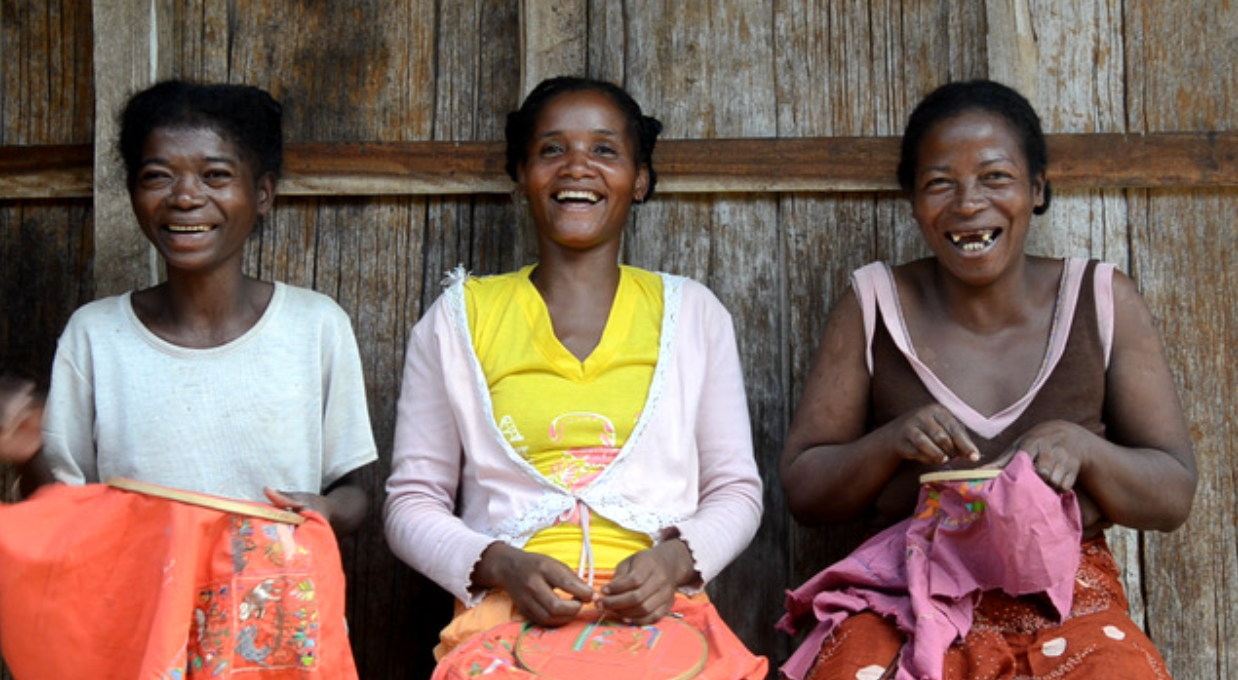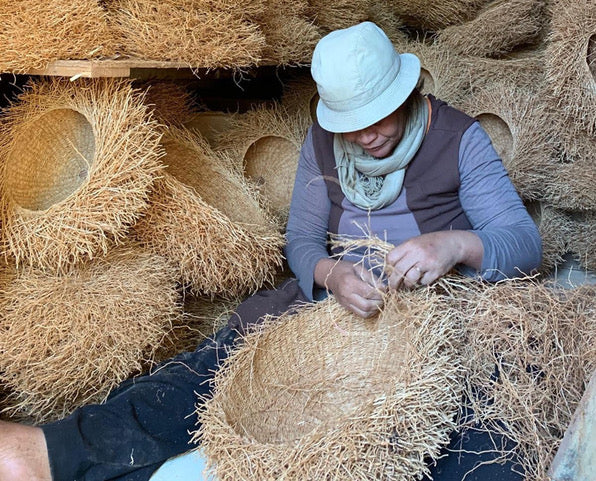
Spirit Weavers: Wounaan Basket Makers
Written by Mary Anne Wise
Spirit Weavers: Wounaan basket makers.
The Wounaan of Panama’s rain forest believe all plants have spirits and therefore the basket maker is a Spirit Weaver. Contemporary Wounaan baskets are intended to function as art and as a woman weaves her basket, she captures the plants’ spirits in her basket.
The creation of a hosig di, or masterpiece, for basket collectors around the world consider Wounaan baskets among the finest in the world, begins in forest. Collecting the sacred chunga (black palm tree fronds and leaves), to weave the baskets, is a communal activity. It’s also a learning opportunity for children to grow awareness of the plants involved in the process. And of the dangers, too, because stripping the chunga can result in stinging ant armies suddenly swarming and extreme caution must be taken not to disturb their colonies.

Above: Harvesting chunga is a communal activity.
The chunga is dried and teased apart into fine thread-like strands. Next, the weaver collects dye stuff from the area surrounding her home or forest. In preparation for the dye bath, leaves, berries, seeds, wood shavings and roots are pounded, squeezed, crushed and grated. Often working alone during the dye process, to protect her favorite color recipes, the weaver utilizes the nearby silty river bank, rich in tannin, to coax colors from the plant materials.

Above: stripping the dried chunga into fine thread-like strands.

Above: readying dye materials.

Above: dyeing chunga yellow.
Geometric basket designs are informed by pre-Columbian ceramic and textile patterns, by patterns applied to the bodies of dancers during ceremonies, and from visions experienced by the weavers.
The baskets are constructed utilizing the coil technique. The dyed chunga is threaded through a needle to weave or wrap the strands of bunched chunga ‘coils’ in place. The weaver begins with a small bunch of strands at the base of the basket and builds from that point.
Caring for your hosig di: dye colors are not permanent, although the darker colors are thought to be more stable then others. Best to display your basket away from direct sunlight and rotate your basket periodically. Dust with a clean slightly damp cloth.



Leave a comment
This site is protected by hCaptcha and the hCaptcha Privacy Policy and Terms of Service apply.